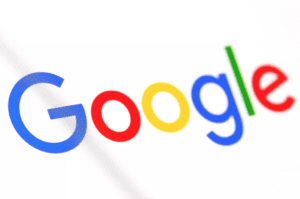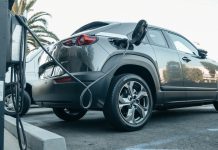Today’s digitally connected, always on the go, and modern consumers, are the current auto shoppers. So, in order for automotive dealerships to target these modern consumers, they have to become just as online and digitally connected. With an ever-changing industry, like the automotive industry, it’s even more important for dealerships to find ways to sell more cars and get ahead of their competition.
Digital marketing is not a new concept by any means. There are over 1,876 marketing technology vendors in the market today, with more than 60% of marketers expecting their respective companies to increase their marketing investments. Though digital marketing can be traced back to the 1980s, they have come a long way since. In 1995, there were 16 million worldwide Internet users, but the average time that Internet users in the U.S. spent online was only 30 minutes.
By 2002, the worldwide Internet users number had risen to 558 million, making it a 3,387.5% increase. In 2004, Google went public and in 2007, the iPhone was born. The new technological releases completely and drastically changed digital behaviors between the buyers and sellers. The 2000s were also the decade in which the majority of the social media platforms were released to the public, such as LinkedIn (2002), Yelp (2004), Facebook (2004), YouTube (2005), and Twitter (2006).
Now, during the 2010s, U.S. Internet users are likely to spend 11 hours daily online. On top of that, more than 67% of users check their phone without receiving a notification, simply to search online or use their various applications. There are more users than ever before using their mobile devices to research vehicles at work, from their homes, and on-the-go.
An early 2016 report released by Think With Google, showcased a study done by Luth Research that showed the 900+ digital interactions that a consumer faced through the process of leasing a vehicle. The process showed five micro-moments to allow dealerships to understand the process from a consumer’s point of view. In 2018, it’s less about understanding these micro-moments, but rather to master them.
The study revealed the answers that consumers need before they lease or purchase a vehicle, what they search for, and where they are. The micro-moments included ‘which car is the best?’, ‘is it right for me?’, ‘can I afford it?”, ‘where should I buy it?’, and ‘am I getting a deal?’ A shopper can start with almost research fourteen brands, but slowly, through their in-depth research which is mostly done on mobile devices, narrowing the list down to only two brands. For example, the ‘where should I buy it?’ micro-moment, the shopper is likely going to search for ‘car dealerships near me’ on Google. If your dealership is not one of the first results that they see, it’s likely that they won’t even consider you.
So, as a dealer, how can you effectively use digital marketing and the understandings of a shopper’s micro-moments to take your business to the next level? Our report will guide you through the process of getting your dealership’s digital marketing strategy more advanced than that of your competition.
The Seven Categories of Digital Marketing
With today’s customers being vastly different than those of the past, it means that our processes and techniques have to be just as different and focused. We have compiled a list of the seven biggest online digital marketing categories, including search engine optimization (SEO), search engine marketing (SEM), content marketing, social media marketing (SMM), pay per click advertising (PPC), affiliate marketing, and email marketing.
Search Engine Optimization
The dictionary definition of Search Engine Optimization (SEO) is the process of enhancing the visibility of a web page or a website within the unpaid results of a search engine. The purpose of SEO is to showcase your web page(s) on the top of all the relevant search engine results. Within SEO, there are two big sectors, namely on-page and off-page SEO.
On-Page SEO
As Google continually makes updates to their search engine algorithms, some 600 changes per year, it can become impossibly hard to keep up with the rapidly changing user behavior. However, regardless of the changing algorithms, on-page SEO has remained relatively consistent. An example of on-page SEO is the meta description and title tag that show up on the Google result page for a certain keyword(s). 
Though keywords placements within the description and title help navigate users to the content they are searching for faster, it actually doesn’t increase your search engine rankings. However, cleverly placed keywords can contribute to the click-through rate of your web page. The higher your click-through rate is, the higher your ranking is likely to be. It is likely that your content might be moved up on the search results page if your page ranks a higher click-through rate.
There are a few errors that should be kept in mind while looking through your on-page SEO, such as speed, page optimization, keyword research, and crawl errors. Crawl Errors can be anything from duplicate content to a 404 error. These issues can cause your website to have a higher bounce rate, receive penalties from Google, impact your rankings, and slower speeds.
Keyword research is the keywords that are placed on a search engine to find the desired content. The two major types of keywords are long tail keywords and short tail keywords. Long tail keywords are keywords that are generally more than three to five words, the specificity makes them easier to target. Short tail keywords are one or two-word keywords that are often more generalized. A good strategy would be to implement a mixture of short and long tail keywords, such as ‘BMW X5 Austin’ as a long tail keyword and ‘Popular SUVs’ as a short tail keyword. Short tail keywords have higher volume, competition, and cost, but a lower focus, and conversion rate. Long tail keywords have a lower volume, competition, and cost, but a higher focus and conversion rate.
Page Optimization is one of the most critical parts of the SEO process. All aspects, even the smaller ones that seem like a small part of your website, can play a big part in how Google views your content. From the structure and title to the permalink can make a difference in how your content is scanned by Google as well as how user-friendly it is. The higher your page is optimized; the longer users will wish to view your content.
The speed of your website can make or break your ranking, especially in this day and age where consumers want information fast without any delays. Not only do consumers want faster loading pages, but Google also prefers websites with a faster load time. If your website takes longer than 10s to load, the bounce rate increases 123%, which means in loss of potential business. Your customers might go to your competitor brands or other dealerships.
Off-Page SEO
Simply put, off-page SEO is the complete composite of on-page SEO. It encompasses all the aspects of a website that can be done off-site, or more appropriately, off-page. Anything from a promotional piece to guest blogging can be considered as a part of off-site SEO.
Link Building is one, or the, most important factor of off-page SEO strategies. There have been various studies that can physically show proof of how the average number of backlinks correlates your website’s position on Google. The more links you have that lead back to your site, the stronger your authority is for Google. It is a tough and necessary process that garners result that are well worth the effort. The first step though should always be to have great content to link to. A good rule of thumb is to focus 90% of your time creating riveting and engaging content, and the other 10% at link building. Mentioning other bloggers or influencers within your content is a great way to add value and give praise to fellow influencers.
Social Sharing is another great tool that can contribute to your off-page SEO strategy. It basically entails you sharing your content on your dealerships social media platforms to help spread it further to your possibly diverse audiences, increasing your brand awareness. LinkedIn is a great tool for off-page social sharing SEO. LinkedIn is a great tool as it puts out a notification to all of your followers when you post a new article, which means that all those that are interested in your business, get notified with your posts.
Search Engine Marketing
Search Engine Marketing (SEM) is the paid version of SEO. With SEO, you optimize your content to show at the top of the organic search engine result page. With SEM, you can pay your way to the top of that result page. Through SEO, your cost to get your website to the top of the results page is minimum as far as Google is concerned, whereas, with SEM, you pay for each one of your hits. The prices can also vary depending on the keywords that you want your website to show for. Some keywords can cost upwards of 600 USD for a single click.
SEM is generally only for those companies that offer their consumers with a paid product and/or service. For automotive dealerships, it can be quite handy to invest in an SEM strategy as you are offering your customers a product. Various studies have also shown that the return on investment on SEM strategies can be higher than any real estate or stock investment could be. They can even create five times, ten times, or even twenty times the ad spend.
Content Marketing
Content marketing provides your consumers with relevant and timely value for your audience. You might be wondering as to how or why you might need content marketing. The answer is in fact quite simple because content marketing is SEO. Content is one of the top two ranked factors according to Google, which means that the more engaging content you have on your website, the higher your chances of getting higher numbers of leads and traffic, even with organic search. Publishing relevant articles to your dealership’s blog, such as ‘Top 10 Winter Preparation Tools’. 

HubSpot reported that websites that post higher than sixteen content pieces every month, end up driving a lot more traffic to their sites in comparison to those that don’t. Posting regularly every month can also increase the number of leads that you receive. For long-term content marketing strategies, the costs per lead are likely to drop by around 80%. For those content marketing strategies and techniques, you won’t see the results instantaneously, but rather a gradual growth in your website viewers.
Content Marketing Forms
Content can come in various forms, rather than just writing as most would assume. It can be in almost any form, such as viral videos, podcasts, blogs, and even photos. Some of the most effective forms of content are also the most expensive and difficult. This means that regardless of what your strengths are, you can get content out that suits your style.
Regardless of the form of your content, there are various purposes that they have. Content, such as videos, are great for building awareness of your brand. By spreading your name with your content, you enable readers to start and continue to recognize your brand. They develop credibility and social proof through posting data-rich and informative videos, giving you instant credibility. The videos also drive sales and traffic.
Content Publishing
Once the content has been created, the next step is publishing and syndicate it. Producing great content is good but spreading and sharing it on social media can only aid in your brand awareness. There are various tools that can help you schedule new content for publishing on all the social media platforms.
Social Media Marketing
Nowadays, there are hundreds of social networks in the online sphere. Gary Vaynerchuk is a social media guru. He is successful on Twitter, YouTube, Pinterest, Facebook, and even Instagram. He stated that ‘content follows context’, which basically means that you need to respect the context of each social platform, otherwise you will lose. For example, you won’t post long-formed content, such as blogs, on Facebook. That sort of content is meant for YouTube and blogs.
Instagram is slowly, but surely, becoming one of the most popular worldwide social networking platforms. They currently have more than 700 million monthly active users, surpassing Twitter and Snapchat combined. With a focus on visuals, Instagram is great for dealerships to showcase their inventories.
Snapchat
Another popular social network, Snapchat can be a great tool for building the awareness of your brand. While it may not be at the same popularity level as Instagram or Facebook, it still has a large enough following to engage with the content that you share. Influencer marketing is great on Snapchat. Snapchat is also great for posting behind-the-scenes footage to give a more humanized feel to your social networking platforms. If your dealership is having any events, it’s great to show the prep and some footage that wouldn’t otherwise make it on Instagram or Facebook.


Social Media Trends of 2018
The change and rise of social media marketing is a current trend of 2018. Though they have always been popular among consumers, lately all brands and companies have been dipping their feet into the world of social networking. With Facebook at a decline in terms of organic reach, other social networks are clamoring to gain what Facebook is losing. In terms of money makers, ad revenue is one of the number one ways for social media platforms to grow. As such, it means that dealerships need to combine organic and paid content posts to gain the most success.
Paid Advertising
You can have paid advertising on almost all social media platforms, even if they slightly differ from one another. On Facebook, advertising can be seen in a display format. Ads there will be posted directly on the news feed of the targeted audiences. On Twitter, brands can post ads that will be received by targeted and relevant audiences. This allows them to have a bigger reach than just those that follow them. LinkedIn is one of the best social media networks in terms of advertising and promoting content. It offers organic posts as well gives a user base filled with high-level users, which makes it easier to reach users that would otherwise be hard to reach.
Pay Per Click Advertising
Pay Per Click Advertising (PPC), as the name suggests, is the payment of every click that you receive on an ad that was created by you. It is similar to search engine marketing and can be seen by many of larger social media platforms, such as Twitter, LinkedIn, YouTube, and Instagram. Two of the most popular PPC advertising platforms are Facebook and Google AdWords.
PPC – Facebook
On Facebook, you simply have to create an ad that has the same look of a Facebook status update. After that, you have to pick the target audience, including their location, age, and likes. The last part is to set up a budget of how much you are willing to spend per click. Facebook ads can also be shown on the sidebar.
PPC advertising is a bit sneakier than other forms of advertising. They are better at blending into the normal newsfeed of a user’s profile, making them less obvious as traditional advertisements. The specific targeting also allows you to target only those consumers that are likely to benefit from the ad, rather than those that would have no interest in your dealership.
PPC – Google AdWords
In 2016, Google AdWords net digital ad revenue was nearly 30bn USD. The estimated net digital ad revenue is set to be 45bn USD but 2019. Google AdWords dominates PPC simply because Google is the largest and most popular search engine. No other search engine comes even close to the user base and power that Google has. This means that everyone who wants their advertisements to be seen does so on Google. Google AdWords works on a bidding-based system, which means that you bid for your keywords against other advertisers, with the goal of ranking first. They can cost anywhere from less than 1 USD to more than 500 USD.
Affiliate Marketing
Affiliate marketing, in the simplest terms, is basically a word of mouth review that you get paid for. For dealerships, this could be anything from a certain brand of vehicle cleaner to a brand of floor mats that are offered through the dealership. This allows you to get some extra cash each time your referral leads to a sale. Blogging is a great way to drive affiliate sales through the recommendations of certain products.
Email Marketing
The direct communication with your customers and audience is email marketing in the simplest form. Email actually does better with engagement in comparison to social media platforms. Studies have shown that you’re 40x more likely to gain customers through email than through Twitter or Facebook.
The current trends of 2018 show email marketing yielding the highest ROI in terms of online marketing. The personalization and segmentation can make or break your email marketing strategies. Personalized emails, from referencing their interests, history, to their name, can mean everything. They seem to have higher conversion and open rate in comparison to templated emails. Segmentation can increase the revenue by almost 760%. Segmentation allows you to split your user base into groups that allow you to send them with specifically targeted content.
Online digital marketing is a big deal. There are a lot of aspects that come with it, but the results that it has the probability of receiving is well worth the effort that it takes. Through the various aspects of digital marketing that was stated above, you have the necessary tools and techniques to get your dealership better than that of your competitor. All it takes it some time and effort for you to achieve an excellent digital marketing strategy.
References








